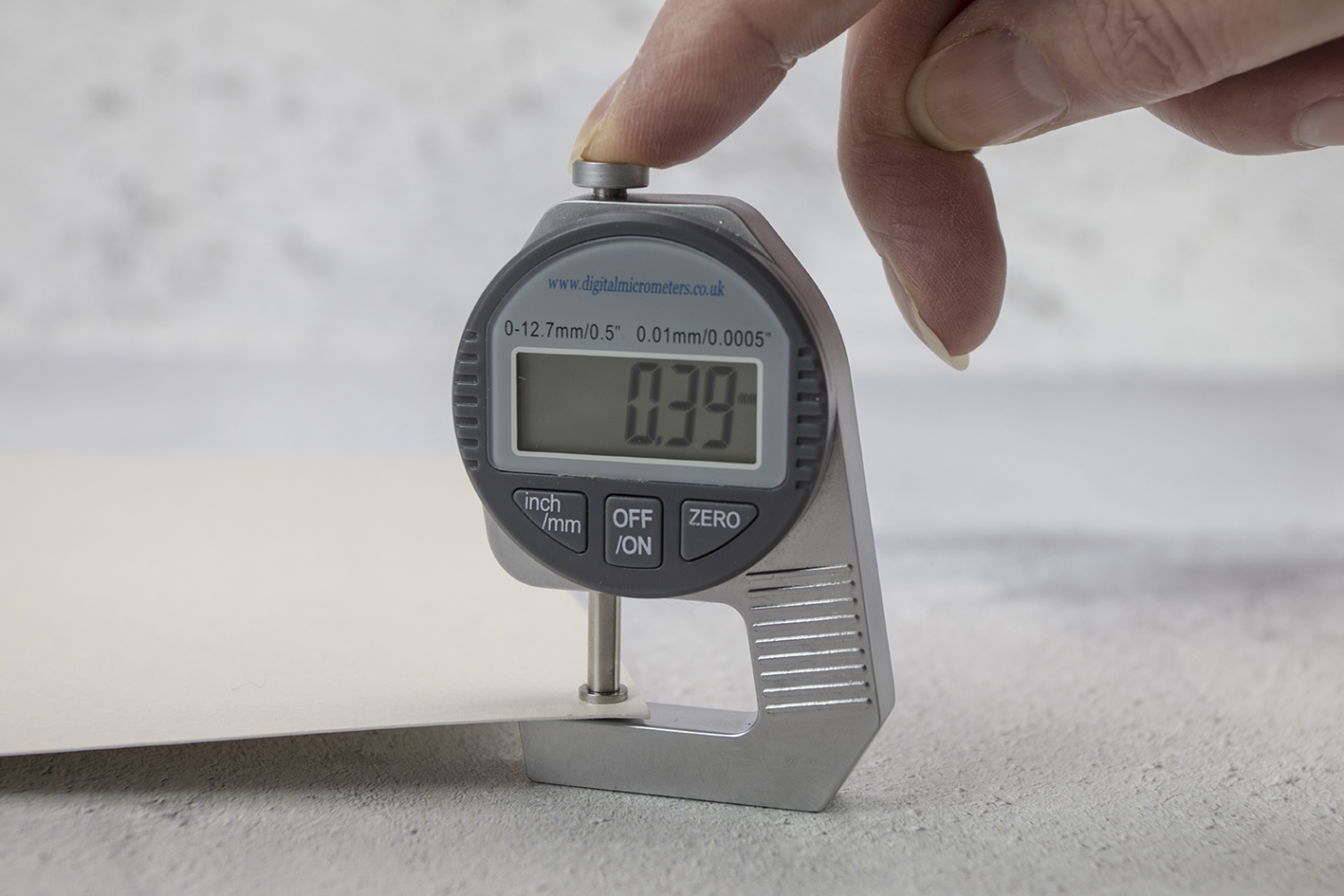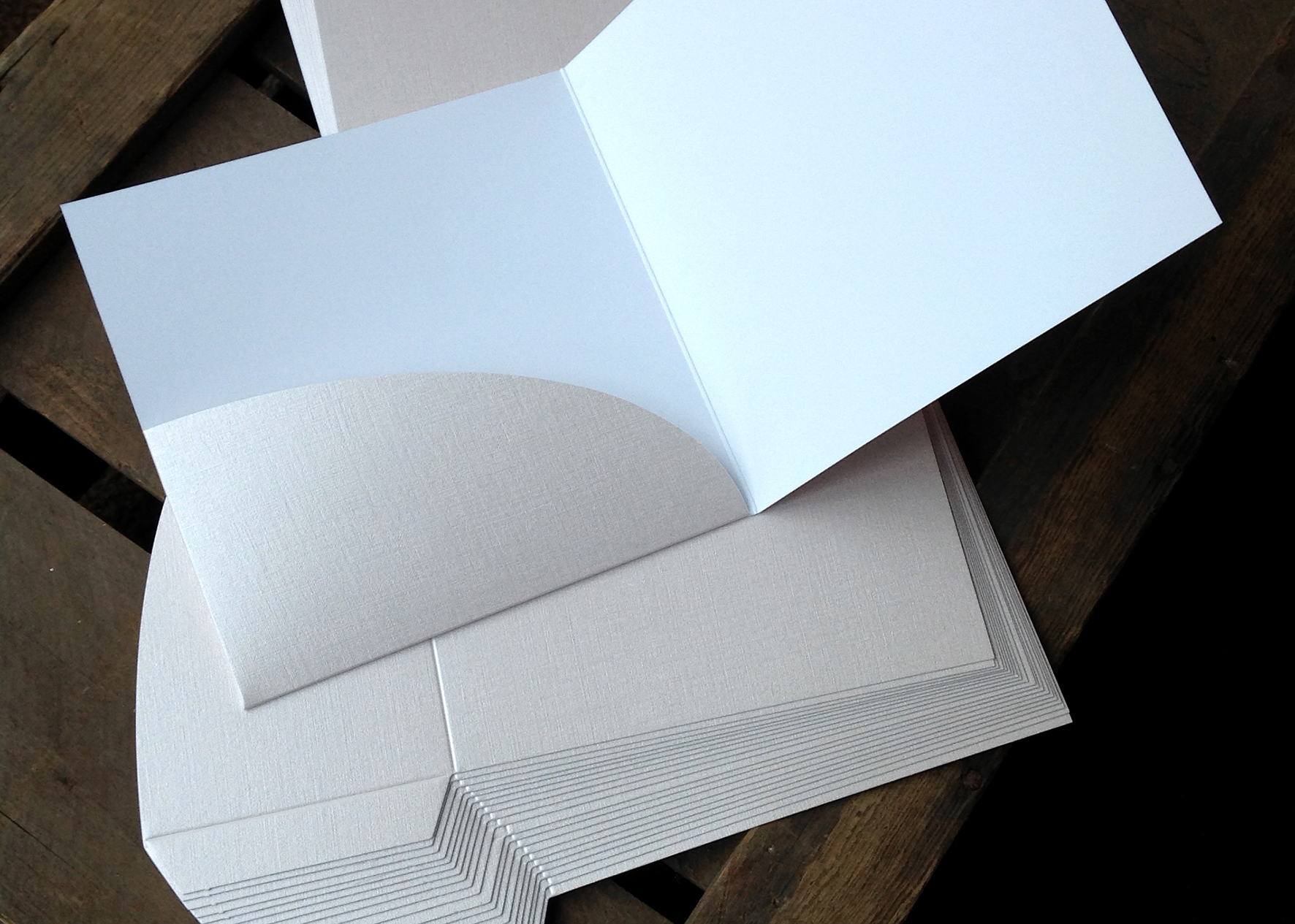A4 Card, GSM, and Paper Thickness
Choosing High Quality A4 Card
Understanding gsm is important when choosing A4 card a paper stock. One of the most common questions we’re asked regarding wedding stationery card stock is ‘how thick is the card’, or what’ gsm is the card’? It’s a common misconception that gsm is how thick a piece of paper feels and it’s an indication of high quality; however, this is not the case. Cereal box card feels thick, but it’s unlikely that you’d want to use this for your wedding invitations!
Papermaking is a mechanical process at a paper mill with enormous paper machines (around 100m long!)
It’s a complex process in simple terms refined pulp is added to large amounts of water, mixed and then sprayed onto a metal mesh to allow separation of the fibres and the water. It is then pressed to remove moisture and finally dried. Once dry the paper is rolled into enormous rolls on the end of the machine weighing anything between 10 – 50 tonnes, these are then slit into smaller rolls or cut into sheets.
As with most products, paper is milled to a standard within a manufacturing tolerance. These tolerances can result in variations of shade, thickness, weight and size. The most common standards for paper are ‘GSM’ and ‘MIC’.
‘GSM” is an acronym standing for ‘grams per square metre’, it’s calculated by measuring the physical weight of 1m x 1m of stock.
As it would be impractical to physically weigh a sheet of stock this size the calculation is often made from a smaller sheet. It’s more commonly written as gsm or sometimes g/m2, g/m² or g2m. The higher the GSM, the heavier the card will be the lower the GSM, the lighter the paper weight will be. For example, paper weight gsm are divided as follows:
- 35 to 55 gsm thin paper the types of paper for newspapers
- 70 to 80 gsm multipurpose paper, copy paper and printer paper (usually in 500 sheet reams)
- 90 to 100 gsm high-quality office paper or printing paper
- 120- to140 gsm heavy weight paper, light card stock, suitable for high quality envelopes
- 150 to 240 gsm light craft card, excellent for punching out shapes, layering and die-cutting
- 240 gsm and above good quality card stock ideal for handmade cards and business cards
Paper Thickness
‘MIC’ is an abbreviation of ‘microns’ or ‘micrometre’. This is a measure of the physical thickness of paper and is measured using a micrometer. It’s often written as mics, mi or µm.
The ‘weight’ tolerance for paper making is plus or minus 5%. If a paper is described as 285 gsm and your ‘first batch’ is terrific quality because it’s 299gsm (within tolerance) yet your’ second batch’ is disappointing because it’s actually 270gsm (still within the tolerance). Similarly, if the paper ‘mic’ standard is 0.8 µm then from making to making it could vary from 0.76 to 0.84 µm.
Not only this paper also has a ‘grain’ which is formed as the fibres align themselves in the direction of travel through the paper making machine on the wire former. Imagine a piece of balsa wood; it will fold/snap easily along the grain and not so easily against the grain, the paper will behave in precisely the same way. So folding, creasing and scoring paper along the grain (or parallel to the grain) will break fewer fibres and therefore you will have a much ‘cleaner’ fold or score.
As well as the making tolerances within manufacture the grain direction can differ from one flat A4 sheet of paper to the next. This happens as a result of maximising the ‘number out’ of the milled sheet; some A4 sheets are cut parallel to the grain, and some are cut against the grain.
Handmade papers such as mulberry and lokta papers are traditionally made by hand using rag or bark to create the pulp which is poured onto fine mesh screens. These are then laid out in the sun to dry at which point the paper can be peeled off the screen. Such handmade papers can obviously vary in all parameters especially colour and thickness and imperfections or impurities are part of their charm.

Blank Cards and Envelopes
For card making or making your own cards crafters usually use 300 gsm card blanks (or paper card ranging from 240gsm to 300 gsm card) as this makes good scored blank greeting cards. Card making supplies for Christmas card craft, birthday and personalised cards can be die-cut and can be in a pack or as single sheets.
Craft card comes in many paper thicknesses, but there’s no doubt that the thicker the paper, the higher the perceived quality.
We hope that this brief explanation of its manufacture helps us all to manage our expectations when we see those slight variations.














